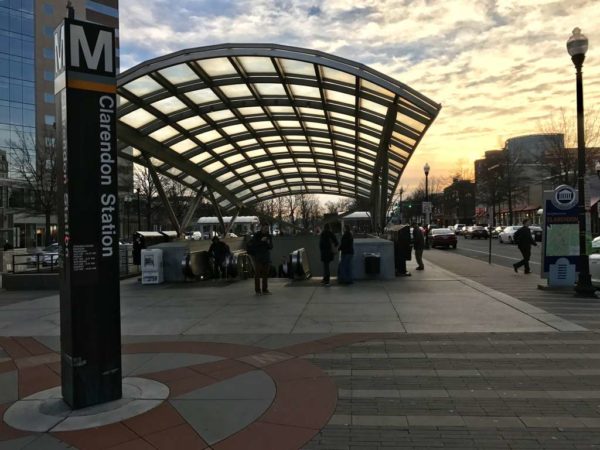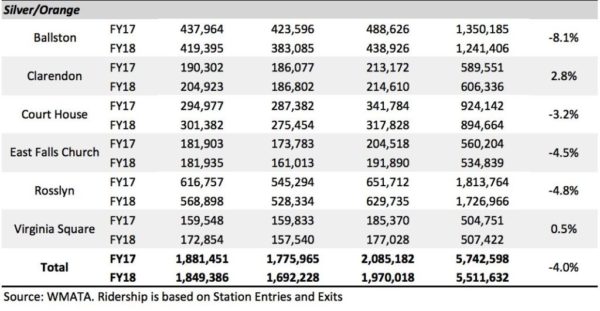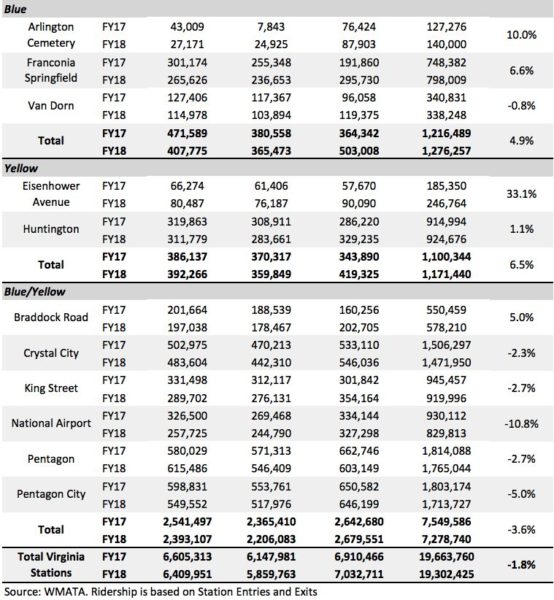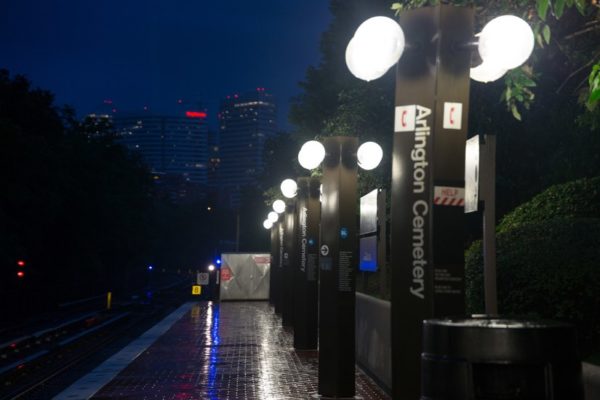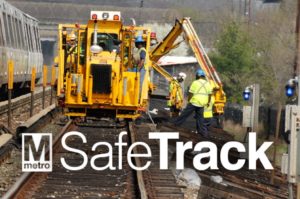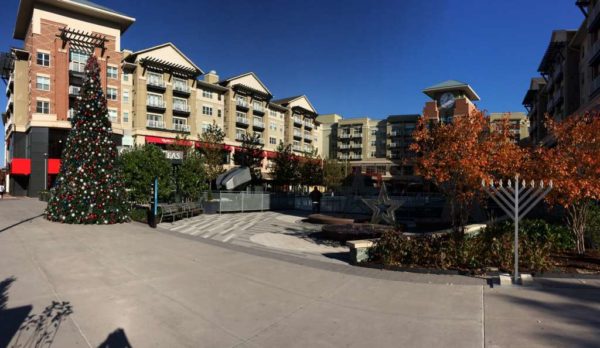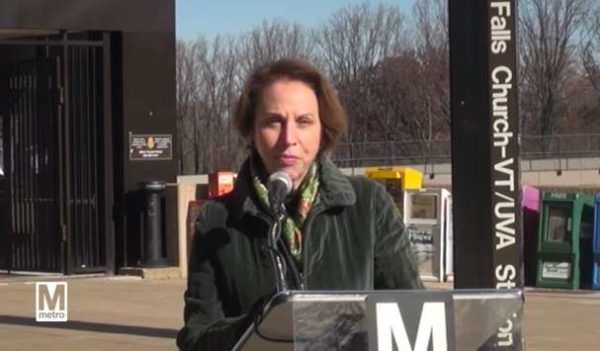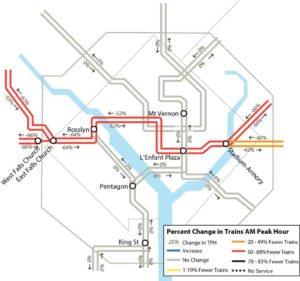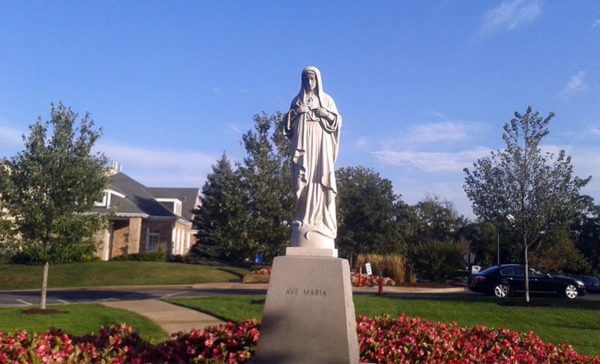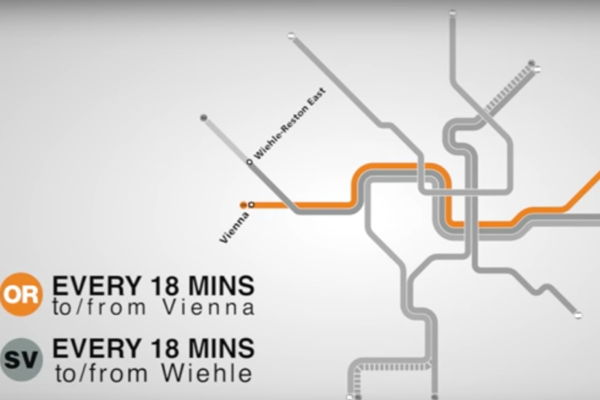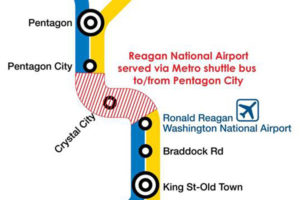Nearly a year after Metro’s “SafeTrack” maintenance blitz wrapped up, Arlingtonians still haven’t returned to the transit system, new data show.
An ARLnow analysis of figures compiled by WMATA and released to the Northern Virginia Transportation Commission shows that ridership at Arlington’s 11 Metro stations fell by about 4.1 percent in the first three months of 2018 when compared to the same time frame last year.
Back in early 2017, WMATA was right in the midst of SafeTrack, with large sections of Metro lines closed temporarily and substantial headways for passengers, even at rush hour. But the ridership numbers suggest that any Arlington riders dissuaded from hopping on Metro during the heavy maintenance work have yet to embrace the rail service once more.
ARLnow’s analysis also shows Metro ridership in the county has dropped by about 13.4 percent compared to the same time frame in 2016, before SafeTrack work began.
Metro officials and county leaders say they’re not overly disturbed by these numbers, noting that WMATA ridership as a whole only fell by 1 percent when comparing the first three months of this year to 2017. Yet they also acknowledge that other transportation options are steadily luring riders away from Metro, and that these declining ridership numbers may be a symptom of problems in the county beyond WMATA’s woes.
“This really indicates how our transportation network is being disrupted in ways not just associated with Metro,” said Christian Dorsey, the vice chair of the Arlington County Board and a member of the Metro Board of Directors, while adding that “we’re not going to overreact to the numbers we see in one quarter.”
Metro spokeswoman Sherri Ly wrote in an email that ridership in Arlington generally “reflects the ridership trends systemwide.” She says Metro has broadly found that “peak periods are performing less poorly, however off-peak (especially evening) ridership is down much more steeply,” after SafeTrack.
WMATA leaders “are confident that by providing safe, reliable service, Metro can win back riders who may have changed their travel patterns during SafeTrack,” Ly added. Yet she did acknowledge that a handful of different factors have prompted large ridership drops at several Arlington stations this year.
Metro observed one of the largest declines in riders at the Ballston station in the first three months of the year, with a more than 8 percent decline from the same period last year. Ballston also recorded a nearly 20 percent drop in ridership from 2016 to 2018, the largest of any Arlington station over the same time period.
Ly believes that’s largely due to ridership dropping on weekends, “when service is truncated from Wiehle-Reston East to Ballston for track work,” a frequent occurrence for Silver Line riders.
Along the Blue Line, however, there could be more systemic problems.


